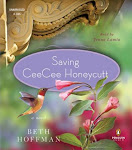 Leviathan wakes / James S.A. Corey. -- New York : Orbit, c2011.
Leviathan wakes / James S.A. Corey. -- New York : Orbit, c2011.
582 p. ; 24 cm.
(The Expanse ; book 1)
ISBN: 9780316129084 (pbk.)
"James S.A. Corey is the pen name of fantasy author Daniel Abraham and Ty Franck..." page 567
1. Conspiracies – Fiction. 2. Interplanetary voyages – Fiction. 3. Science fiction. 4. Space warfare – Fiction.
813.6
Even though he grew up in the gravity well of Earth, executive officer Jim Holden of the Canterbury is comfortable with his job hauling icebergs from the rings of Saturn back to the fifty million customers now living in the asteroid belt. In the century and a half since it was settled, the Belters, long and lean by Martian or Earth standards, have developed their own culture and ethos, but still Holden is comfortable among them. But his comfort disappears when his ship gets a distress call that turns out to be bait for an ambush. What Holden does in the aftermath ignites an interplanetary war.
Part military science fiction, part detective story with a touch of horror the authors (Cory is the joint pen name of Daniel Abraham and Ty Franck) have stuffed Leviathan Wakes full of action, adventure, delightfully inventive plot twists and interesting characters. The nearly 600 page tome seemed to speed by as I read it and left me in eager anticipation of the next installment of the saga.







